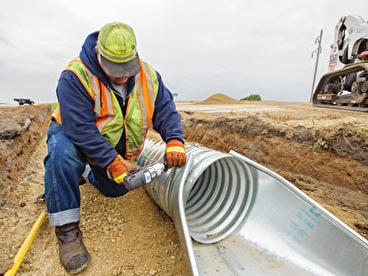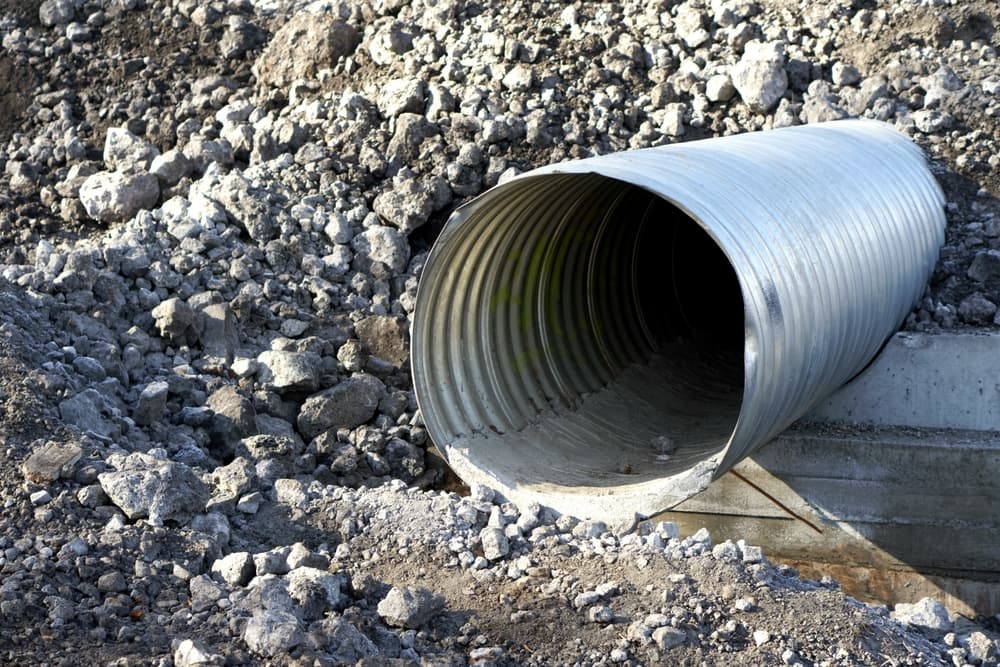Precision Pad Construction for Secure Structures
Precision Pad Construction for Secure Structures
Blog Article
Culvert Setup Made Easy: Step-by-Step Guide for Success
Setting up culverts may look like a simple task, however guaranteeing a successful result requires cautious planning and implementation. From choosing the suitable culvert dimension to integrating proper drain procedures, each action in the setup process plays a crucial function in the capability and longevity of the culvert system. By adhering to a methodical strategy and taking notice of vital details, the installation can continue smoothly, reducing prospective concerns down the line. Stay tuned to discover the necessary steps and considerations that can make culvert setup a seamless and effective undertaking.
Choosing the Right Culvert Size
Selecting the appropriate culvert dimension is essential for ensuring effective water flow and structural honesty in culvert setup tasks - Pad Construction. The size of the culvert straight affects the flow ability of water with the framework. A culvert that is too small can result in flooding and overflow, while one that is as well huge may cause decreased water velocity, possibly triggering debris build-up and obstructions
To figure out the ideal culvert dimension, factors such as the watershed area, peak flow prices, and hydraulic effectiveness requirement to be very carefully thought about. Calculations based on these specifications assist in choosing a size that can adequately manage the expected water quantity while reducing the threat of obstructions and architectural failing.
It is important to seek advice from design guidelines and criteria to guarantee that the picked culvert size fulfills the task needs and regional policies (Pad Construction). By selecting the appropriate culvert size, task managers can maximize water circulation, avoid potential issues, and boost the overall performance and durability of the culvert installation
Preparing the Setup Website
Efficient culvert setup necessitates thorough preparation of the installation website to make sure optimal architectural assistance and functionality. Before beginning the setup process, it is important to remove the website of any debris, plants, or blockages that could hinder the culvert's positioning. Guaranteeing a degree foundation is important for the correct positioning and security of the culvert. This may entail grading the website to create a smooth, also surface that can properly support the weight of the culvert and any anticipated lots. In addition, correct compaction of the dirt under the culvert is needed to avoid settling or changing gradually.
Moreover, it is necessary to consider elements such as dirt make-up, groundwater levels, and environmental influences when preparing the installation site. Conducting a detailed website evaluation can help recognize any type of possible difficulties or threats that might affect the culvert's performance. By taking the time to prepare the find this installation site appropriately, you can aid ensure a successful culvert setup that satisfies structural needs and ensures long-term functionality.
Positioning the Culvert Appropriately

The quality at which the culvert is placed is essential for preserving a correct incline for water circulation. Additionally, the culvert needs to be oriented properly to ensure that the inlet and electrical outlet are in the correct areas. Pad Construction.
Backfilling and Condensing the Dirt
Appropriate backfilling and compaction of the soil around the culvert is vital to guarantee stability and stop prospective concerns in the future. When the culvert is properly placed, the following critical action is to backfill the area around it with suitable product.
After positioning the backfill product, it is necessary to portable it in layers of uniform thickness. Making use of a compactor or a mechanical tamper, small the soil gently to stay clear of damaging the culvert. Compaction helps in reducing the chances of settlement and ensures consistent assistance around the culvert. It is crucial to compact the soil equally on all sides of the culvert to keep its structural honesty.
Appropriate backfilling and compaction not only give stability my explanation to the culvert but likewise help in protecting against dirt erosion and keeping the longevity of the culvert system.
Making Certain Appropriate Drainage Combination
Integrating efficient drainage options plays an important role in the general performance and long life of culvert installations. Correct drainage combination is important for taking care of water flow, stopping erosion, and guaranteeing the architectural integrity of the culvert system. To accomplish this, it is vital to create a comprehensive drain strategy that thinks about factors such as the volume of water expected, the topography of the area, and the sort of dirt existing.

In addition, incorporating features like erosion control steps, such as riprap or plant life, can better enhance the effectiveness of the drainage system. By thoroughly planning and executing these drain services, culvert setups can work effectively and stand up to the test of time.
Final Thought
To conclude, appropriate culvert setup is important for preserving effective water drainage systems. By picking the ideal culvert size, preparing the installation site, placing the culvert correctly, backfilling and condensing the dirt, and making sure appropriate drainage integration, success his response can be achieved. Adhering to these actions will help ensure the longevity and effectiveness of the culvert, inevitably adding to the overall success of the water drainage system.
Report this page